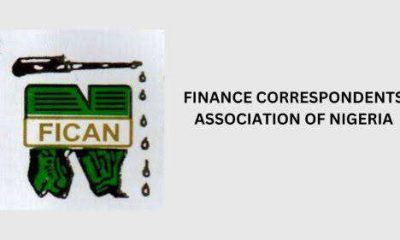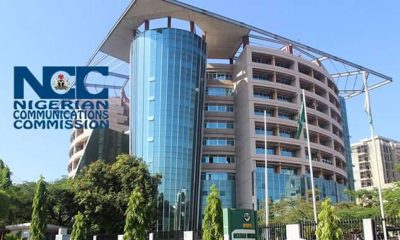Economy
Commentators urge caution as CBN drives microfinance agenda

By Yusuf Mohammed
Commentators are urging caution and highlighting the imperative of putting in place thorough safeguards as the Central Bank of Nigeria continues with its drive to facilitate the re-emergence of a large swathe of microfinance lending institutions in the country.
In a scheme that is being carried out in conjunction with the Nigerian Postal Service, the plan is to roll out as much as 2000 microfinance banks across the country as part of efforts to extend banking services to particularly rural segments of the population.
However critics of the scheme argue that given the peculiar demands of banking, a lot needs to be done to ensure that the envisaged services not only get up and running, but that they are sustainable overall.
Equally notable is the fact that the national experience with rural banking and microfinance services since its introduction in 2005 has not been very palatable. While several commercial banks that extended their services countrywide to cater for potential customers in many rural communities were to encounter the challenge of low deposit mobilization, others in the microfinance arena had to deal with the challenge of low patronage on account chiefly of the fact, chiefly, that their interest rates for loans was even higher than that of the more established commercial banks.
These challenges notwithstanding, both the leadership of the Central Bank and the Postmaster-General of the Federation, Mr. Adebisi Adegbuyi, who is throwing in his organisation’s countrywide structures and assets into the scheme are upbeat that the scheme would yield variable results this time around.
Part of the winning link for them is the fact that the scheme has been linked with the agricultural revival policy of the Buhari administration which the CBN has been in the forefront of its realization through the agency of the Anchor Borrowers scheme.
Accordingly then, the new microfinance scheme has been packaged as the Nigeria Incentive-based Risk-sharing System for Agriculture Lending, NIRSAL and the banks being established are dubbed NIRSAL Micro-Finance Banks.
According to NIPOST Post-Master General, Adegbuyi 106 outlets are involved in the take-off phase even as the new post office-based MFBs would now begin to serve as outlets through which the Central Bank of Nigeria (CBN) would be disbursing agriculture loans to rural farmers, among other services.
For NIPOST, there are two immediate benefits that can be generated from the scheme and this much was communicated by Adegbuyi. They are notably the more efficient use of NIPOST infrastructure and contributing to the financial inclusion drive of the nation.
The investments made by the government in postal outlets all over the federation in time past would now be put to use to reach the unbanked.
A lot of Nigerians are unbanked and these unbanked people are mostly in the rural communities and these postal outlets will be leveraged upon to promote financial inclusion in the unbanked communities.
NIPOST built post offices in nearly every corner of the country, most of which are currently in derelict state. It is these offices that are about to be refurbished for the purpose of micro-finance banking,’ Adegbuyi reeled out.
To drive the scheme which is being run with the CBN and the Bankers’ Committee; NIPOST had been issued a super-agent licence.
Operationally, this means that NIPOST is serving as an agent bank to about all of the commercial banks in the country that subscribe to the scheme.
While on paper, the outlay for the project, and particularly as it has to do with better use of public postal infrastructure and reaching out to the unbanked, may not be faulted, but then there remain questions.
Says the analyst, Tony Eze:
“I am usually skeptical about social transfer schemes or artifices designed to assist the poor that is not based on competitive market structures. Even Mohammad Yunus’s Grameen Bank is founded on sound commercial basis with the required collective collateral on a rotatory credit scheme framework. The post office bank is not new and has been a grass root savings mechanism in a number of countries, but I want to be better informed about certain issues: What is the legal foundation of the banks, what are they set up to do, and could we try alternative strictly private sector arrangements? After all, Accion MFB and LAPO MFB are doing very well and can be replicated as business models to emulate. I am a consummate believer in market efficiency and frankly feel quite uneasy about public sector loans going through post office banks.”
CBN, Bankers Committee position
For the apex bank, its involvement with the project is simple and straightforward. It is all about growing its shared agent network, payment system, mobile banking, mobile money and associated packages towards ensuring that it contributes to the overall job creation goals of the national economy, poverty reduction and achieving expanded financial inclusion.
On its part, the Bankers’ Committee sees its role as that of an institutional facilitator to ensure the seamless operation of the package.
The partnership coming from the banks is to facilitate the movement of credit. The assurance that we have this time, that this financing will reach to the grassroots is the fact that the CBN has been saddled with the responsibility to open branches; aggressive branch opening, so that this fund can be accessible through the MFB that has been created by the Bankers’ Committee.
It is this institutional depth that will assure the likes of Eze that he can be rest assured that all grounds have been covered and that the scheme would not flounder.
The view from history.
In the Ibrahim Babangida military presidency, a number of institutions were set up to find answers to the challenge of ensuring that the poorer urban and rural segments of the population and their communities were not entirely left out of the development and business loop that was accompanying the changing economic dynamics of the time, no thanks to the Structural Adjustment Programme, SAP and its many fall-outs.
The schemes included the Directorate of Food, Roads and Rural Infrastructure, DFRRI, the Peoples Bank and the Community Banks.
Beyond those preliminary initiatives, Nigeria’s more formal romance may have begun in December 2005 when a policy package was put together to craft unique policies to ensure greater financing possibilities for the Micro, Small and Medium Enterprises (MSME) component of the economy and correspondingly boosting rural finance. It was this process that was to lead to the establishment of microfinance banks in the country.
But there have been issues, with the two principal ones being those of low capital base overall and corresponding weak deposit mobilisation.
Though there are about 900 registered MFBs in the country at the moment, only a few are properly functioning. As a result, by December 2018, the aggregate loans volume granted by MFBs was just about N482.9 billion.
Another challenge has to do with the lending threshold which impacts on the ability of businesses to grow and expand. For example, of all the loans given out by the MFBs as much as 72 per cent of recipients could not access more than N1.4 million each within the same period under reference, thus constraining their ability to grow and expand.
To boost the ability of the microfinance industry to play an even greater role in the national economy, the CBN in October 2018 put in place a new capital base structure for MFBs, and to allow for ample time for them to recapitalize, put the effective date at between April 2020 and 2021 for existing ones. New and intending applicants were however mandated to begin with the new rates.
Broken down, microfinance banks in the unit category now have to show evidence of N200 million and N50 million capital respectively as opposed to the previous tally of N20 million for Tier 1 (urban) and II (rural) MFBs, while those in the state category have to boost their capital base to N1billion, up from the previous rate of N100 million. As for national category MFBs, their internal capitalisation ceiling now rises from N2billion to N5billion.
While the journey of ensuring even greater traction for the Nigerian economy continues, analysts say one thing that the nation cannot afford at this time is to throw scarce resources down the drain; hence the imperative of ensuring that NIRSAL MFB succeeds.










